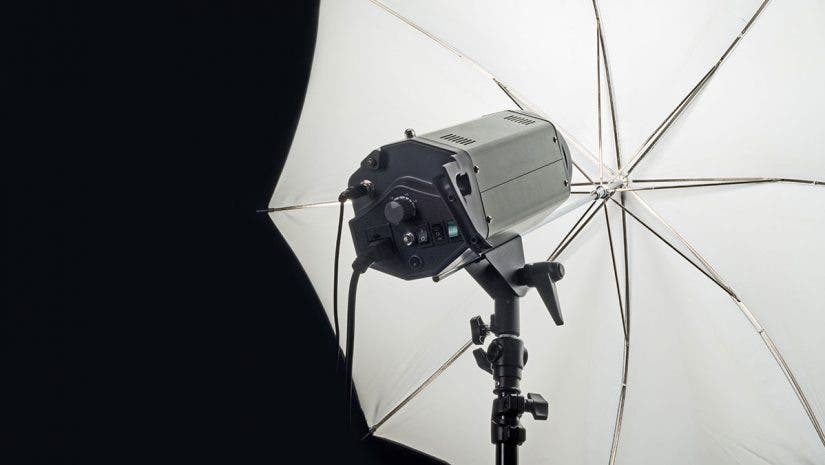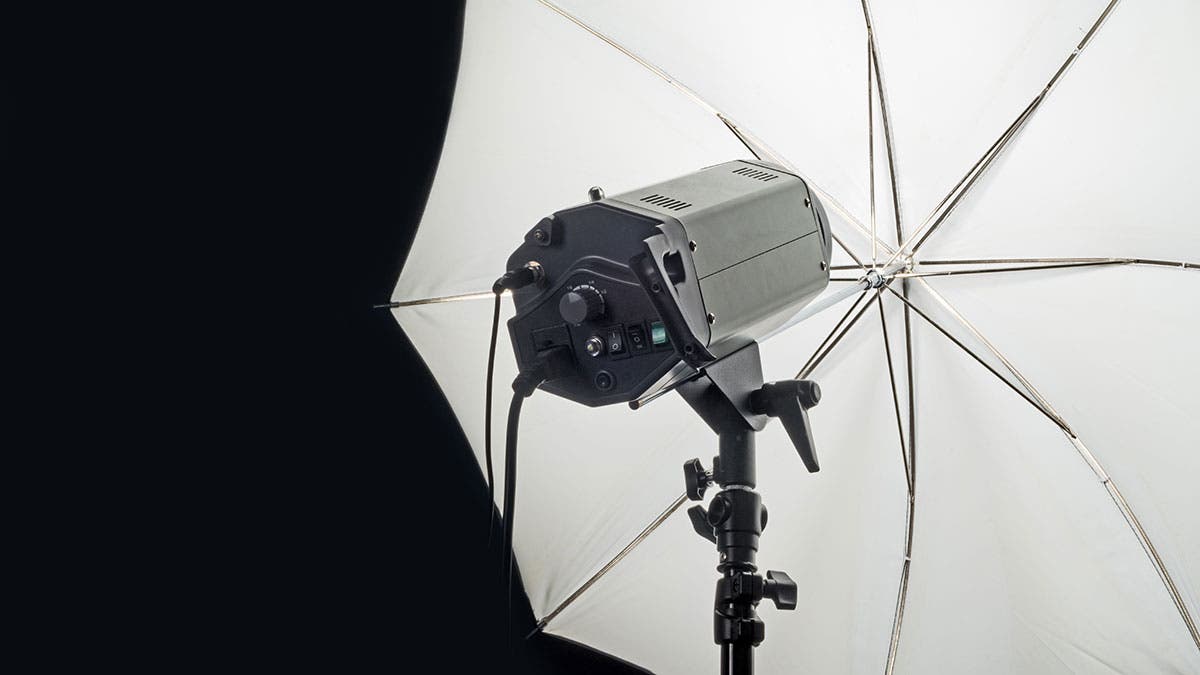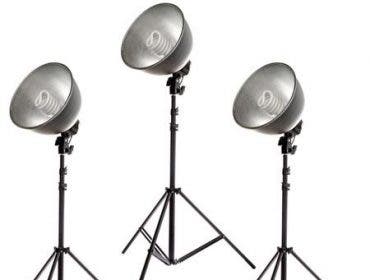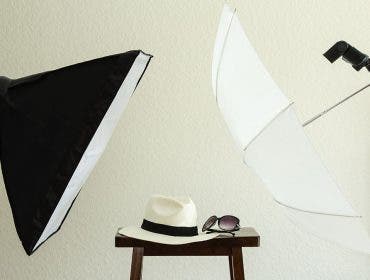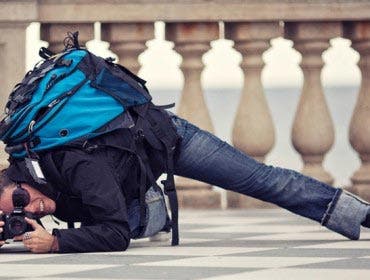As we continue to look at budget-priced studio portrait photography lighting modifiers, I’ve discovered that while Octaboxes are great for portraits, there’s a $10 shoot-through umbrella that produces results that are almost as good (or maybe better)!
Umbrellas are the simplest and most inexpensive form of light modifier that you can buy, and that simple fact also makes them the most popular. Photographic umbrellas look and act like the same kind of umbrellas that keep “raindrops from falling on your head,” except that in a studio lighting situation they’re reflective, and have a light source bounced into them, creating a bigger, softer light source that’s aimed at the subject. The bigger a light source is, the softer the light falling on the subject will be.
“Although both images were lightly retouched, less retouching was required on [the image made with the shoot-through umbrella] shot because of the overall softness of the light…” —Joe Farace

In “What Everybody Ought to Know About The Shape Of Soft Boxes,” I showed what I feel is the most versatile light modifier—the Octagonal softbox. Octaboxes are offered under different trademarked names from many sources including Photek, Westcott, Elinchrom, and Flashpoint. The Octobox produces a large, directional yet wraparound light source with even light spread. Flashpoint offers Octaboxes in sizes from 36×36-inches ($99.95) to five feet ($169.95.) Tip: The “bigger is better” rule applies here too but to shoot with a 60-inch Octabox you’ll need a larger shooting space and a little bigger budget. No matter what size you choose, you’ll also need a speed ring with lets you attach the Octabox to a studio light. Flashpoint offers them in versions to fit different lights with prices ranging from $16.95 to 39.95, depending on which studio light you want to mount it on.

Here is the lighting set-up used for this comparison test. The main light is at camera right. The tape marks on the floor show where I placed the main light and it is the same for all of the previous installments of this series. I did this so you could make easy comparisons between all the different lighting set-ups and modifiers used in previous editions of “From Joe Farace’s Studio.” Backdrop is an Adorama Belle Drape muslin background. © Joe Farace

A Flashpoint DG600 monolight with 36×36-inch Flashpoint Octabox is placed at camera right while I placed a 32-inch Flashpoint 5-in-1 reflector ($25.95) for fill at left. As you can see from this gently retouched portrait, the light is directional and slightly broad. Camera is a Canon EOS 5D and Canon EF 28-135mm f/3.5-5.6 IS lens (at 135mm) and an exposure of 1/125 sec at f/10 and ISO 100. © Joe Farace
 As an affordable alternative to an Octabox, one classic lighting technique is to use a white umbrella in “shoot-through” mode and fire the flash directly though the fabric. Because umbrellas usually have 16 ribs, they are not as “octa” as an Octobox, so light quality is not quite the same and directionality is lost, and light spills out the umbrella’s open sides. Nevertheless, in some applications, using an umbrella in shoot-through mode might be better than using it in a traditional orientation. The upside is that the umbrella used in this example is a 33-inch translucent Adorama umbrella that costs ten bucks! What do the results look like? Take a look at this:
As an affordable alternative to an Octabox, one classic lighting technique is to use a white umbrella in “shoot-through” mode and fire the flash directly though the fabric. Because umbrellas usually have 16 ribs, they are not as “octa” as an Octobox, so light quality is not quite the same and directionality is lost, and light spills out the umbrella’s open sides. Nevertheless, in some applications, using an umbrella in shoot-through mode might be better than using it in a traditional orientation. The upside is that the umbrella used in this example is a 33-inch translucent Adorama umbrella that costs ten bucks! What do the results look like? Take a look at this:

Shoot-through umbrella: Here the lighting set-up remains the same with the DG600 monolight in the same location at camera right and the Flashpoint 5-in-1 reflector for fill at camera left. Exposure for this retouched portrait was 1/125 sec at f/10 and ISO 100, and is identical to the Octabox shot only because I increased the DG600’s variable power to match it. As you can see the light is soft and less directional as you can see by the difference in the additional light that’s falling on the background. Although both images were lightly retouched, less retouching was required on this shot because of the overall softness of the light produced by using a shoot-through umbrella. © Joe Farace
For the photographer on the budget, an inexpensive umbrella used in shoot-through mode is an affordable way to create a lightbank look without the cost of a lightbank or a speed ring. One of the most important things to remember that in my studio, there is no one “perfect” way to do anything. Portrait lighting is always changing as new tools are introduced and new styles make our clients demand a certain look. What I’m trying to do in this series is give you choices that fit what you want to do and how much you want to spend.
Joe Farace is the author of the new book “Studio Lighting Anywhere” which is available from Adorama
